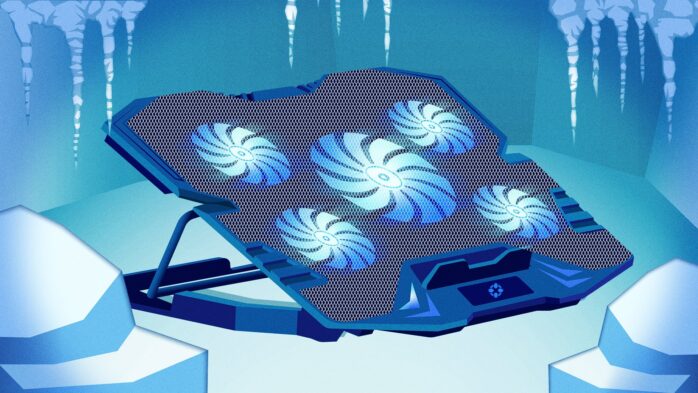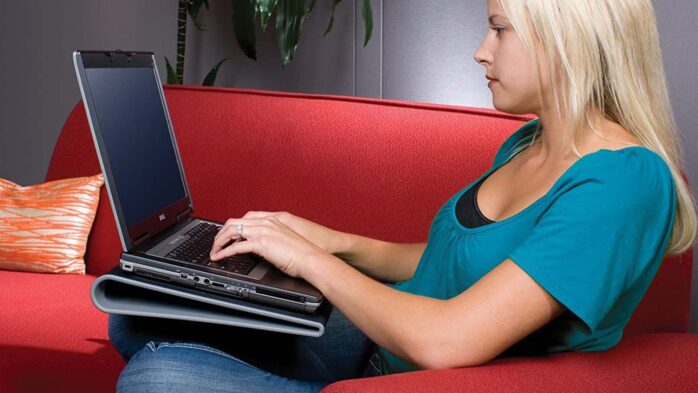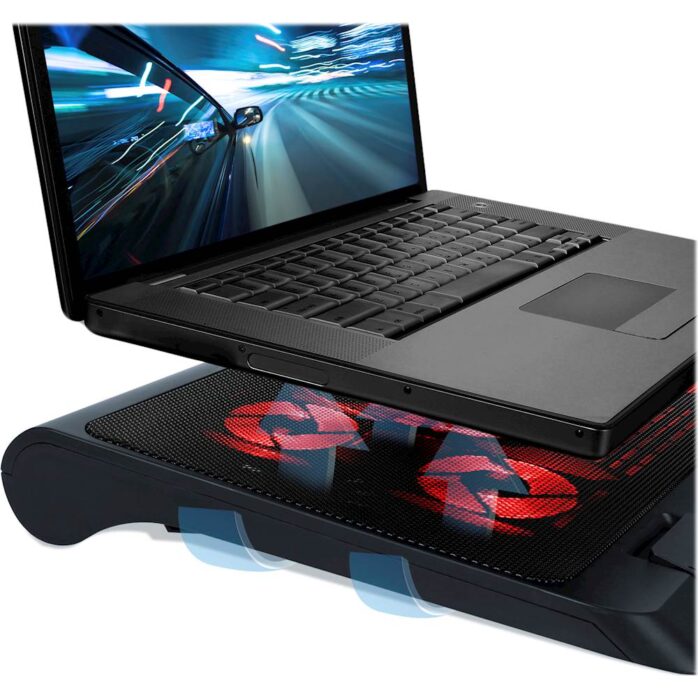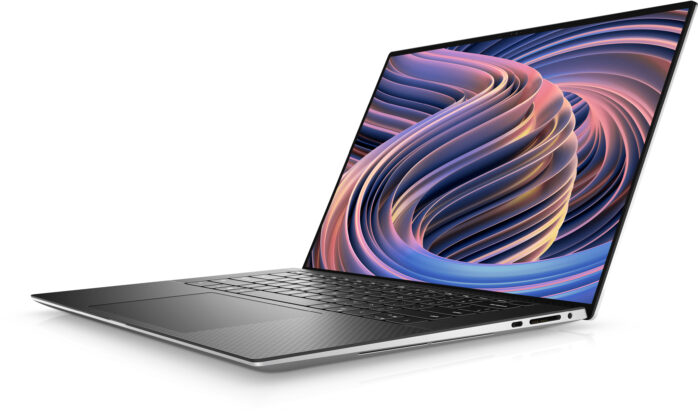A cooling pad is a necessary and maybe even a must-have accessory for anyone who uses a laptop. Laptops can easily overheat depending on where and how you use them. So, whether you are hoping to keep a laptop cool on bed or have a laptop prone to overheating, choosing the right cooling pad can optimize your laptop’s performance.
How Does a Cooling Pad Work?
We know that a cooling pad works by, well, cooling your laptop. But how does it really do that? Similar to other gadgets, a laptop can overheat when used extensively or placed in a soft and warm place.
Laptop cooling pads offer support and work by offering active or passive cooling support to the laptop. The coolness of the pad can be adjusted depending on how much cooling it needs.
Active Cooling Pads

Active cooling pads work by adding airflow to the laptop using built-in fans. As the air moves toward the laptop, the temperature decreases. Some laptop coolers include blowers that blow dust away from the laptop. Active cooling pads consume a lot of power.
Passive Cooling Pad
Such pads use thermal components in the pad to reduce heat. They rarely consume power and use the components to lower the power supplied to the laptop. They are also less noisy than active cooling pads as they do not have any fans.
However, passive cooling pads are not recommended for laptops with fan vents as they can actually do the opposite and cause overheating.
Laptop cooling pads can reduce temperatures from anywhere between 2 and 30 degrees, especially if they are high-quality cooling pads.
How to Choose a Cooling Pad

Laptop cooling pads are a great laptop accessory, and many factors go towards choosing a laptop cooling pad that is right for you.
Location of Laptop Fans and Vents
Where a laptop brings in air and dispels or exhausts, it will determine what type of cooling pad you get. Most laptops bring in air from the bottom and dispel it from the sides or the back.
If your laptop exhausts from the bottom or the side, most colling pads should work.
Size and Weight of the Laptop

The size of the laptop dictates the cooling pad you need to get. Your laptop should be able to sit comfortably on the cooling pad. If it does not, you will not get the maximum performance from the cooling pad.
The cooling pad should also be sturdy enough for your laptop. It should be able to hold your laptop well and not buckle under pressure.
Material
The material of the cooling pad also matters. Some come with a plastic body, while others come with metal surfaces. Those with metal surfaces usually use aluminum, which is a great conductor of heat, quickening the cooling process.
Number of Fans

Laptop cooling fans come with one or many fans, usually four at maximum. Cooling pads with only one fan usually have one large fan that cools the laptop evenly. They are also less noisy.
On the other hand, one with many fans will have smaller fans that cool targeted areas on the laptop, cooling it faster. The more fans, the higher revolutions per minute (RPM), and the louder the pad is.
Ports
Laptop cooling pads usually come with USB ports, and the more ports, the better, mainly for laptops with fewer ports.
Fan Control
A cooling pad that has fan control options is a great pick. This is because it enables you to control the speed of the fan according to what you need. You can increase the speed when it is hot and decrease it when it is cooler. However, the more speed you increase, the noisier it will be, while the inverse is true.
Price

The average price of laptop cooling pads ranges between 15 and 50 USD. Cheaper cooling pads may be within your budget but may end up getting damaged faster. The factors above determine the price of the cooler. Go for a brand with great reviews.
Portability
Since you probably carry your laptop around, you need to get a laptop cooling pad you can carry around as well. When choosing one, check and see if it is lightweight and portable. The slimmer the cooling pad, the lighter it is.
Vacuum Laptop Coolers
Also known as attachable laptop coolers, they work by accelerating exhaust. They are attached to the laptop’s vent and suck the heat. Laptop vacuum coolers that have a heat sink work even better. They work much better than cooling pads and can be a great alternative to them.
Check Your Laptop
As much as vacuum pads and laptop cooling pads are great for dealing with overheating, they offer a temporary solution. Your laptop may be having a deeper issue that needs immediate rectification, and there are several steps you can take to reduce fan noise and increase speed.
Therefore, if you notice that the laptop does not cool well even with a laptop cooling pad, you will need to clean it, replace the thermal paste or upgrade the fans. A laptop cooling pad or vacuum cooling pad only works to supplement what is already there.


















